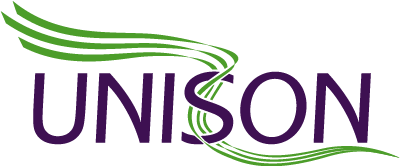This page answers some of your questions about what Personal Protective Equipment (PPE) your employer should be providing.
What protective equipment should I be getting from my employer?
The content of this page is based on the best available expert advice agreed between the NHS, and the health protection/public health authorities of the United Kingdom. However, as these authorities make clear, autonomy is given to practitioners and staff working with employers to make the decision, based on risk assessment, as to if/what Personal Protective Equipment PPE) may be required.
Where a risk assessment shows a need for PPE, the equipment you will get depends on what you do, with whom and where you are working.
For many staff, this will consist of items such as gloves and aprons. Those more at risk may require masks and face/eye protection.
PPE issued in relation to COVID-19 should only be issued when the risk assessment shows it is necessary.
PPE will largely be concentrated on those providing direct care for service users, cleaning premises contaminated by droplets/body fluids that may contain the virus, or in some limited cases, where other measures such testing, social distancing and creating social bubbles are considered insufficient.
This will allow PPE to be concentrated on those that require it. It is important that you are trained in its use.
Incorrect use of PPE may be putting yourselves, colleagues, family and friends at additional risk. The virus lives longer on plastics than ordinary clothes, so if not correctly used and disposed of items such as masks can become vessels for spreading infection.
For other staff, unless the risk assessment shows otherwise, measures such as working from home, workplace adjustments and following government guidelines on social distancing and self-isolation are the most effective preventive measures. In addition, PPE should be considered alongside – not instead of – these measures.
All PPE issued to prevent the spread of COVID-19 should be:
- Correctly fitted, taking into account any impairment or health condition, as well as body shape
- Located close to the point of use
- Stored to prevent contamination in a clean/dry area until required for use (expiry dates must be adhered to)
- Disposed of after use into the correct waste bin/stream.
PPE according to your job
Staff providing direct care to service users
Staff providing direct care in the health and social care sectors are required to wear PPE, including face masks (not to be confused with face coverings). However, when using PPE it’s still necessary to practice a range of infection control measures to reduce the risk of transmission not only for you but also colleagues and other service users. Read this NHS/Public Health infection control guide (PDF) for more details.
We have more specific advice on these pages:
PPE advice for health care workers
PPE advice for ambulance staff
PPE advice for those working in social care
Cleaning staff
If your job involves cleaning premises where there have been possible or confirmed cases, you should as a minimum be provided with disposable gloves and an apron.
Where a higher level of contamination may have been present, for example, rooms that have been slept in by suspected sufferers of COVID-19, and there is visible contamination with body fluids, then surgical face masks and eye protection should be considered. There is government advice on how PPE should be used alongside other infection control measures, such as personal hygiene.
Settings where social distancing is difficult to maintain
As explained above, in most other non-health and social care, such as testing, social distancing measures, hand washing and other hygiene measure are considered the best defence against the spread of COVID-19.
However, in some of these occupations, PPE may still be required. Go to your appropriate occupational web site:
Education (schools, further and higher education) services
Other local government services (including refuse and social workers
Caring for service users who require shielding
If you are caring for/working within two metres of any person who requires shielding (those classed as clinically vulnerable) whether in a personal or professional capacity you should as a minimum be wearing a surgical mask, disposable plastic apron and gloves; and practice excellent hand hygiene to minimise risk of infection.
Removing and donning protective clothing and equipment
We all have a responsibility to wash our hands. However, washing your hands is important when you are using any sort of protective equipment and particularly important after you have been wearing it and that you comply with any instruction provided by your employer.
It’s also important to comply with instructions on how to remove the equipment, keeping it away from your face and ensuring you do so as far away from colleagues, patients and residents so that you avoid the possibility of splashing.
However, there is also a responsibility for employers to ensure you are given the space and time to do all this safely and that it is considered part of your paid hours and duties.
Hand hygiene and the safe use of equipment is important for both you and those you care for.
Staff uniforms/clothes
The appropriate use of personal equipment will protect staff uniform from contamination in most circumstances.
However where you are working in COVID-19 infected areas employers should consider, if not already provided, measures such as financial support (tax relief may be available otherwise), changing rooms, additional uniforms and laundry services (if not already provided).
